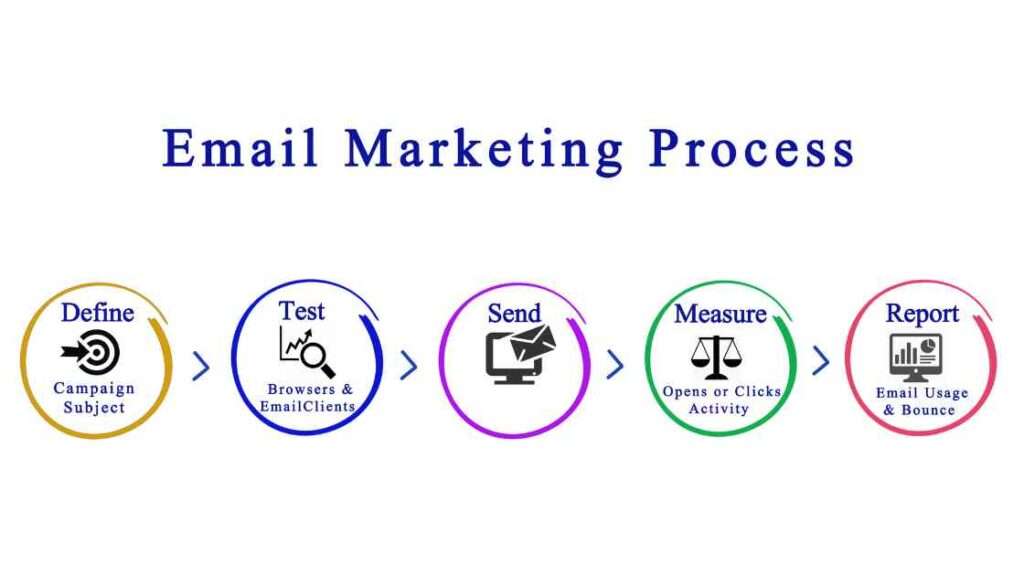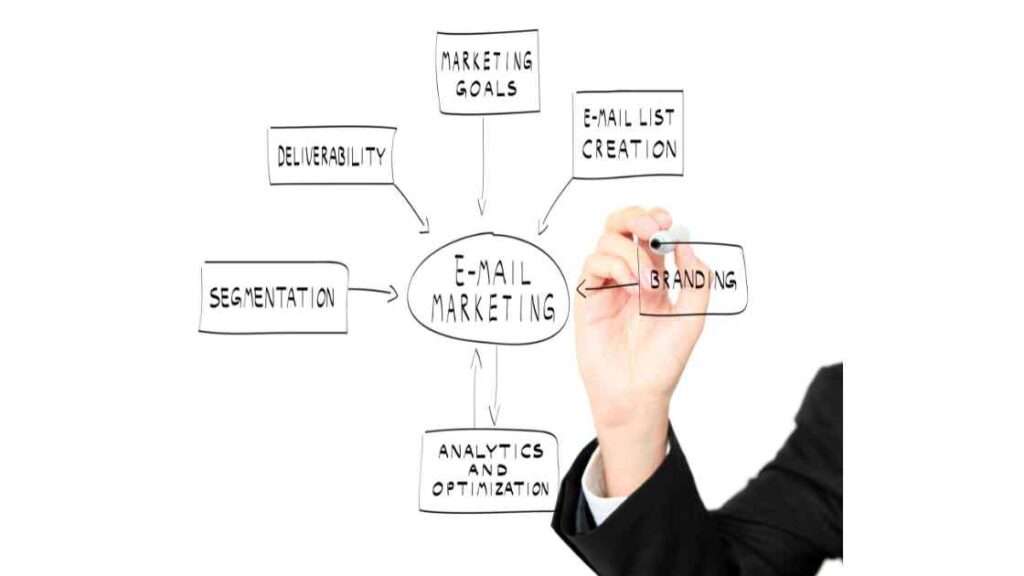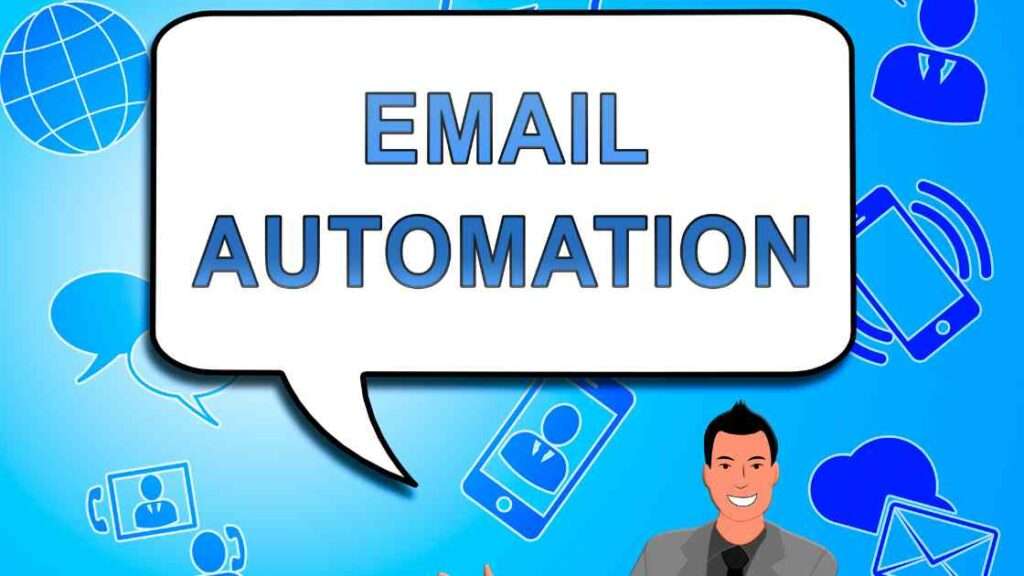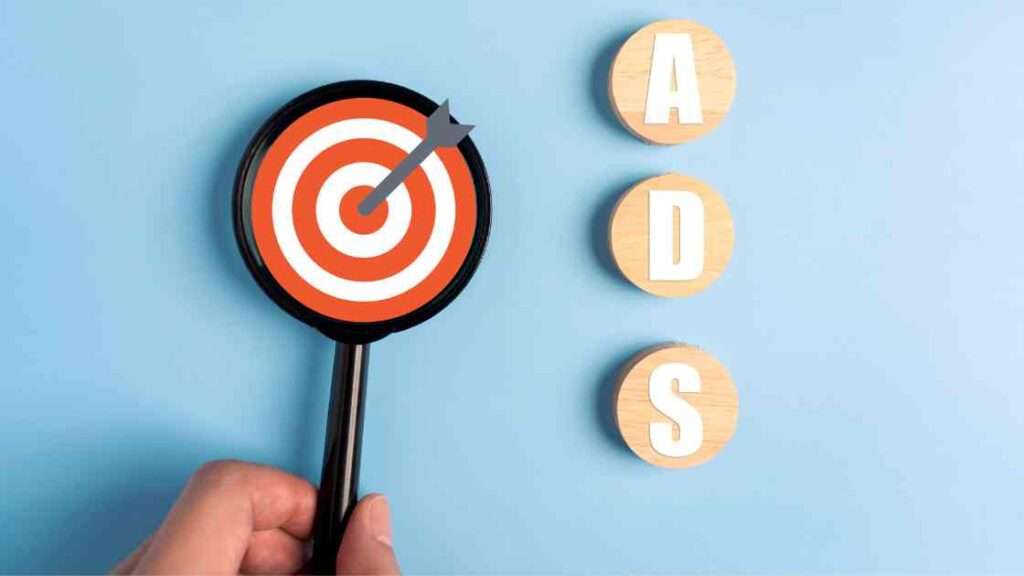Email marketing has become an indispensable tool for businesses to reach and engage with their target audience. By sending personalized, targeted messages via email, businesses can promote their products or services, build lasting relationships, and drive conversions. In this comprehensive guide, you will discover a wealth of free email marketing resources and tools that can empower your email marketing campaigns and elevate your strategy to new heights.
Whether you are a seasoned marketer or just starting out, this guide will provide you with valuable insights and practical tips to maximize the effectiveness of your email marketing efforts. From developing a winning email marketing strategy to building and managing your email list, creating compelling email content, and leveraging automation, you will find everything you need to supercharge your email campaigns.
Stay ahead of the curve with the latest trends and techniques in email marketing. Learn how to leverage customer data for highly targeted messages, integrate email with other marketing channels, and experiment with new formats like video. Discover the power of email marketing and unlock its full potential to drive growth and success for your business.

Key Takeaways:
- Discover a wide range of free email marketing resources and tools.
- Learn how to develop an effective email marketing strategy aligned with your business goals.
- Master the art of building and managing your email list for maximum engagement.
- Create compelling email content that resonates with your audience and drives action.
- Leverage the power of email automation to save time and streamline your campaigns.
Developing an Email Marketing Strategy
An effective email marketing strategy is essential for achieving your business goals and connecting with your target audience. By aligning your email marketing efforts with your overall business objectives, you can maximize the effectiveness of your campaigns and achieve measurable results. Here’s how to develop a successful email marketing strategy:
1. Define Your Goals
Start by clearly defining your email marketing goals. Common goals include:
- Increasing sales
- Generating leads
- Driving website traffic
- Building brand awareness
- Retaining customers
Having specific goals will help you focus your email marketing efforts and measure the success of your campaigns.
2. Identify Your Target Audience
Knowing your target audience is crucial for creating relevant and engaging email content. Develop buyer personas to understand the demographics, preferences, and interests of your target audience. This will help you tailor your emails to their needs and preferences.
3. Plan Your Email Content
Based on your goals and target audience, plan the types of emails you’ll send. This may include:
- Promotional campaigns
- Transactional confirmations
- Newsletters
- Notifications
Determine the frequency and timing of your emails for each segment to ensure you maintain a consistent and engaging communication strategy.
4. Establish Key Performance Indicators (KPIs)
To track the success of your email marketing strategy, establish key performance indicators (KPIs). These metrics will help you measure the effectiveness of your campaigns and identify areas for improvement. Common KPIs include:
- Email open rate
- Click-through rate
- Conversion rate
- Unsubscribe rate
Regularly analyze these metrics and make data-driven decisions to optimize your email marketing strategy.
By following these steps, you can develop a robust email marketing strategy that drives engagement, nurtures leads, and contributes to the growth of your business.

Key Steps to Developing an Email Marketing Strategy
| Steps | Description |
|---|---|
| Define Your Goals | Identify the specific objectives of your email marketing campaigns. |
| Identify Your Target Audience | Develop buyer personas to understand the demographics and preferences of your audience. |
| Plan Your Email Content | Decide on the types of emails you’ll send and the frequency for each segment. |
| Establish Key Performance Indicators (KPIs) | Define metrics to measure the effectiveness of your email marketing strategy. |
Building Your Email List
Building a quality email list is essential for the success of your email marketing strategy. It allows you to reach a targeted audience who are genuinely interested in your brand and offerings. Here are some key tactics to help you build and grow your email list:
Collect Customer Contact Information
To start building your email list, you’ll need to collect customer contact information. This can be done through various channels, such as your website, social media platforms, events, and offline interactions. Make sure to capture their email addresses, as well as any other relevant details you may need for segmentation.
Use Opt-In Forms and Checkboxes
Opt-in forms and checkboxes are powerful tools to encourage website visitors and customers to subscribe to your email list. Place these forms strategically on your website, such as in the sidebar, footer, or as exit-intent pop-ups. Offer clear value propositions and communicate the benefits of subscribing to entice visitors to opt in.
Offer Incentives for Joining Your List
Incentives can significantly boost your email list growth. Entice potential subscribers by offering lead magnets, such as exclusive content, discounts, freebies, or access to a members-only area. These incentives serve as valuable resources that provide immediate value to subscribers, increasing their motivation to join your list.
“Building a segmented list of engaged subscribers ensures your future email campaigns will reach the right audience with relevant content and offers.”
Segment and Organize Contacts
Segmenting your email list allows you to deliver personalized and relevant content to different groups of subscribers. Gather relevant information during the opt-in process to aid segmentation, such as demographic data, interests, or purchase history. Use this information to create segments and tailor your email campaigns accordingly, increasing engagement and conversions.
Segmenting your contact list enables you to send targeted offers, promotions, and updates to specific groups, increasing the chances of conversion. For example, you can send tailored content based on the subscriber’s geographic location, past purchases, or browsing behavior.
Visual Representation of Building Your Email List Tactics
| Tactic | Description |
|---|---|
| Collect Customer Contact Information | Implement strategies to collect email addresses and relevant details from potential subscribers. |
| Use Opt-In Forms and Checkboxes | Place opt-in forms and checkboxes on your website to make it easy for visitors to subscribe. |
| Offer Incentives for Joining Your List | Provide valuable incentives, such as lead magnets or exclusive content, to motivate users to subscribe. |
| Segment and Organize Contacts | Divide your email list into segments based on demographic data, interests, or purchase behavior. |
By implementing these tactics, you can build a robust and engaged email list that will serve as the foundation for your successful email marketing campaigns. Remember, the quality of your list matters just as much as the size, so focus on attracting and engaging subscribers who are genuinely interested in what you have to offer.
Email List Management
Managing your email list is an essential aspect of successful email marketing. By implementing effective email list management strategies, you can ensure better deliverability rates, higher open rates, and increased subscriber satisfaction.
Here are some tips for proper email list management:
- Maintain accurate and current data: Regularly update and cleanse your email list to ensure that the information is accurate and up to date. This includes removing duplicate or incorrect contact details.
- Remove inactive subscribers: Identify and remove subscribers who have not engaged with your emails for a certain period of time. This helps maintain a healthy list and improves overall engagement metrics.
- Grow your list over time: Continuously work on growing your email list by implementing lead generation strategies such as offering valuable content or incentives to encourage people to sign up.
- Follow anti-spam laws and regulations: Familiarize yourself with anti-spam laws, such as the CAN-SPAM Act, and ensure compliance in all your email marketing activities. This includes obtaining consent from subscribers, providing clear opt-out options, and including your physical address in each email.
Proper email list management not only helps you maintain a high-quality list but also contributes to your overall email marketing success. It allows you to send targeted and relevant content to engaged subscribers, leading to better conversion rates and a stronger connection with your audience.
Data Hygiene: Ensuring Accuracy and Relevance
One crucial element of email list management is data hygiene. It involves maintaining the accuracy and relevance of your subscriber data by regularly cleaning and updating it.
“Data hygiene is vital to ensure that your email campaigns reach the right audience with the right message. By keeping your data clean and up to date, you can minimize bounce rates, increase deliverability, and maximize the impact of your email marketing efforts.” – [Author Name], Email Marketing Expert
Here are some best practices for data hygiene:
- Regularly clean your email list to remove duplicate or outdated entries.
- Verify email addresses to ensure they are valid and active.
- Segment your list based on demographics, engagement levels, or other relevant criteria to send targeted campaigns.
- Periodically re-engage with inactive subscribers to determine if they are still interested in receiving your emails.
By prioritizing data hygiene, you can maintain a high-quality email list that yields better results and supports your overall email marketing goals.

Creating Effective Email Content
To keep subscribers engaged and drive conversions, it’s crucial to create compelling and relevant email content. By following best practices for email content creation, you can maximize the impact of your messages and achieve your email marketing goals.
Personalization
One of the key elements of effective email content is personalization. Tailoring your subject lines and messages to each individual recipient can significantly increase open rates and engagement. Consider using dynamic tags that automatically insert the recipient’s name or other relevant information to create a personalized touch.
Conciseness and Scannability
When it comes to email content, less is often more. Keeping your messages concise and easy to scan ensures that busy subscribers can quickly understand your offer or message. Break up your content into short paragraphs and use bullet points or numbered lists to highlight key information.
Including Visuals
A picture is worth a thousand words, and this holds true for email content as well. Adding images, infographics, and videos can make your emails more visually appealing and engaging. Visuals can help convey your message more effectively and catch the reader’s attention.

Compelling Calls-to-Action
Your email content should always include a clear and compelling call-to-action (CTA). A strong CTA prompts subscribers to take the desired action, whether it’s making a purchase, signing up for a webinar, or downloading a resource. Use action-oriented language and make your CTA stand out visually with buttons or contrasting colors.
By following these email content best practices, you can create engaging and impactful messages that resonate with your subscribers and drive desired actions.
Email Design Best Practices
A well-designed email newsletter is crucial for enhancing engagement and driving action. By following email design best practices, you can create visually appealing and effective email campaigns that leave a lasting impression on your subscribers. Here are some key tips for optimizing your email design:
1. Use Mobile-Friendly Templates
With the majority of emails being read on mobile devices, it’s essential to use mobile-friendly responsive templates. This ensures that your emails display correctly on different screen sizes and provide a seamless user experience for mobile users.
2. Maintain Clear Branding and Messaging
Consistency in branding and messaging is important for building brand recognition and trust among your subscribers. Use your company’s logo, colors, and fonts consistently throughout your emails to reinforce your brand identity and maintain a professional appearance.
3. Optimize the Layout
A clean and simple layout helps readers focus on the content of your email. Avoid cluttered designs and ensure that your email is easy to navigate. Use headers, subheadings, and bullet points to break up your content and make it more scannable.

4. Include Eye-Catching Images
Images can capture your subscribers’ attention and make your email more visually appealing. Use high-quality and relevant images that support your email’s message and evoke the desired emotional response from your audience.
5. Optimize for Mobile Devices
Since many users access emails on their smartphones, it’s crucial to optimize your emails for mobile devices. Ensure that your email’s layout and content are easily readable on smaller screens, and test your emails on different devices and email clients to guarantee compatibility.
6. Use Compelling Call-to-Action Buttons
Your email design should include clear and compelling call-to-action (CTA) buttons. Use contrasting colors, strong copy, and noticeable placement to encourage subscribers to take action, such as making a purchase, signing up for an event, or visiting your website.
By following these email design best practices, you can create visually stunning and engaging emails that drive results for your business.
Writing Effective Email Copy
Email copywriting is a crucial skill for successful email campaigns. The words you choose and how you present them can make all the difference in capturing your audience’s attention and driving them to take action. To create compelling email content that resonates with your subscribers, consider following these best practices:
- Structure your content with a clear theme: When crafting your email, make sure it has a cohesive and focused message. Each email should have a specific purpose, whether it’s promoting a new product, sharing valuable content, or announcing a special offer.
- Craft compelling subject lines: Your subject line is the first impression your subscribers have of your email. Make it attention-grabbing, concise, and intriguing to entice recipients to open your email and discover what’s inside.
- Focus on benefits and personalization: Show your subscribers how your product or service can solve their problems or improve their lives. Highlight the benefits and value they will receive, and tailor your message to their specific needs or preferences whenever possible.
- Include clear calls-to-action: Your email should guide your subscribers towards the desired action, whether it’s making a purchase, signing up for an event, or downloading a resource. Use compelling and action-oriented language to encourage them to take the next step.
By following these email copywriting best practices, you can create engaging and persuasive content that stands out in your subscribers’ inboxes. Remember to constantly test and optimize your email copy to find what resonates best with your audience.
For more insights on writing effective email copy, check out the example below:
“Don’t Miss Out on Our Exclusive Sale – Limited Time Offer!”
In this subject line, the urgency and exclusivity are highlighted, creating a sense of FOMO (fear of missing out) that compels recipients to open the email for more details. The copy of the email then focuses on showcasing the benefits of the sale, featuring enticing product images, and providing a clear call-to-action to shop now.

| Email Copywriting Best Practices |
|---|
| 1. Structure your content with a clear theme |
| 2. Craft compelling subject lines |
| 3. Focus on benefits and personalization |
| 4. Include clear calls-to-action |
Implementing these email copywriting best practices will help you create compelling content that drives engagement, conversions, and ultimately, business growth.
Email Automation
Email automation is a powerful tool that allows you to streamline your email marketing efforts and deliver highly targeted and personalized messages to your subscribers. By automating your email campaigns, you can save time and ensure timely communication with your audience.
One of the key features of email automation is the ability to set up drip campaigns. Drip campaigns are a series of automated emails that are sent to subscribers at preset intervals or triggered by specific actions. These campaigns help nurture leads, onboard new subscribers, and guide them through the customer journey.

For example, let’s say a user signs up for your newsletter. With email automation, you can set up a welcome series that automatically sends a series of emails introducing your brand, sharing valuable content, and encouraging engagement.
According to a study by Campaign Monitor, welcome emails have an average open rate of 50%, making them a highly effective way to kickstart your relationship with new subscribers.
In addition to drip campaigns, email automation allows you to send triggered emails based on specific actions or events. For instance, you can create cart abandonment emails that are automatically triggered when a user adds items to their cart but doesn’t complete the purchase. These emails serve as a gentle reminder and can help recover potentially lost sales.
Email automation also includes transactional confirmations, such as order confirmations or shipping notifications. These automated emails provide a seamless customer experience and keep your subscribers updated on their purchases.
As your email marketing efforts scale, it’s important to choose an email marketing software that offers scalability options. Scalability ensures that your automated campaigns can handle a growing subscriber base without compromising deliverability or performance.
With email automation, you can unlock the full potential of your email marketing strategy, delivering personalized and timely messages to your subscribers, nurturing leads, recovering lost sales, and driving engagement and conversions.
| Benefits of Email Automation | Features of Email Automation |
|---|---|
|
|
Conclusion
Email marketing has proven to be a highly effective digital marketing channel for businesses looking to achieve growth and connect with their target audience. By implementing a strategic approach that includes building a quality email list, creating engaging content, and utilizing automation tools, you can drive impressive results and elevate the success of your email campaigns.
A key component of email marketing success is building a quality email list. By collecting customer contact information and segmenting your contacts, you can ensure that your email campaigns reach the right audience with relevant content and offers. Additionally, proper email list management, including data hygiene and adhering to anti-spam laws, is crucial for maintaining high deliverability rates and subscriber satisfaction.
Creating effective email content is essential for keeping subscribers engaged and driving conversions. By following best practices such as personalizing subject lines, using compelling calls-to-action, and optimizing your email design for mobile devices, you can maximize the impact of your email campaigns. Automation plays a significant role in email marketing success by allowing you to set up automated campaigns based on triggers or specific dates, saving you time and ensuring timely communication with your subscribers.
With the right resources and tools, you can unlock the full potential of email marketing and achieve industry-leading email metrics. By adopting a strategic approach to email marketing, you can drive the growth of your business, establish lasting connections with your audience, and propel your campaigns to new heights of success.

FAQ
What is email marketing?
Email marketing refers to sending commercial messages to a group of people via email in order to promote a product or service.
What are the key benefits of email marketing?
The key benefits of email marketing include cost-effectiveness, measurability, personalization, automation, brand building, and flexibility.
How do I develop an email marketing strategy?
Start by aligning your strategy to your overall business goals and objectives. Then, determine your target audience, decide on the right email content and frequency, and establish key performance indicators (KPIs) to track progress.
How can I build my email list?
Key tactics for building your email list include collecting customer contact information, using opt-in forms and checkboxes, offering incentives for joining your list, and segmenting and organizing contacts.
How can I manage my email list effectively?
Proper email list management includes maintaining accurate and current data, removing inactive subscribers, growing your list over time, and following anti-spam laws and regulations.
How do I create effective email content?
Best practices for effective email content creation include personalizing subject lines and messages, keeping content concise and scannable, including images, and writing compelling calls-to-action.
What are the best practices for email design?
Email design best practices include using mobile-friendly responsive templates, maintaining clear branding and messaging, using a clean, simple layout, including images, and optimizing for mobile devices.
How can I write effective email copy?
Tips for writing effective email copy include structuring content with a clear theme, crafting compelling subject lines, focusing on benefits and personalization, and including clear calls-to-action.
What is email automation?
Email automation allows you to set up automated email campaigns based on triggers or specific dates, such as welcome series, cart abandonment emails, and transactional confirmations.
What is the conclusion about email marketing?
Email marketing remains a highly effective digital marketing channel for growing your business and connecting with your audience. By following a strategic approach to email marketing, including building a quality email list, creating engaging content, and leveraging automation, you can achieve industry-leading email metrics and drive success for your business.

What are the best email marketing tools for 2024?
The best email marketing tools for 2024 include Systeme, Mailchimp, Constant Contact, Sendinblue, and HubSpot. These tools offer a range of features to help businesses create, send, and track their email marketing campaigns.
Where can I find free email templates for my marketing campaigns?
You can find free email templates for your marketing campaigns on platforms like Mailchimp, Canva, and Sendinblue. These templates are customizable and can help you create professional-looking emails without any design skills.
What are the marketing trends to look out for in email marketing for 2024?
The marketing trends to look out for in email marketing for 2024 include personalized email campaigns, interactive content, mobile-friendly designs, and the use of AI and automation to create targeted and relevant content.
How can I improve the performance of my email marketing campaigns?
You can improve the performance of your email marketing campaigns by analyzing your data, segmenting your audience, using A/B testing, and optimizing your email subject lines and content based on your subscribers’ behavior and preferences.
What are the best free email marketing resources for beginners?
The best free email marketing resources for beginners include blogs and guides by industry experts, free email marketing courses, and webinars that cover email marketing best practices, tools, and strategies.
How can I automate my email marketing efforts?
You can automate your email marketing efforts by using marketing automation platforms like Mailchimp, HubSpot, or ActiveCampaign. These platforms allow you to set up automated email campaigns based on triggers and customer actions.
What are the top email marketing platforms that offer a free plan?
Some of the top email marketing platforms that offer a free plan include Systeme, Mailchimp, Sendinblue, and Moosend. These free plans typically have limitations on the number of subscribers or emails you can send per month.
Where can I find the best email marketing tips for 2024?
You can find the best email marketing tips for 2024 from industry blogs, podcasts, and email marketing experts. These tips cover a wide range of topics, including list building, engagement strategies, and effective email copywriting.
What are the essential features to look for in an email marketing service?
The essential features to look for in an email marketing service include easy-to-use email editors, marketing automation capabilities, advanced segmentation options, A/B testing, detailed analytics, and integration with other marketing tools.
How can I create compelling email subject lines to improve open rates?
You can create compelling email subject lines to improve open rates by using personalization, urgency, curiosity, and relevance. Testing different subject line variations and analyzing the results can also help you understand what resonates best with your audience.
